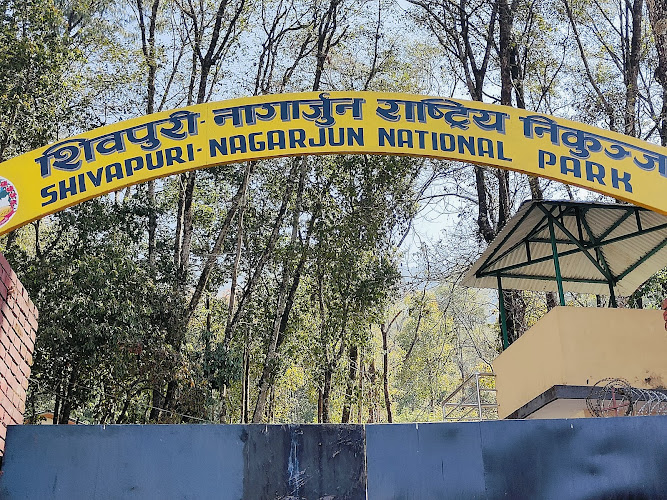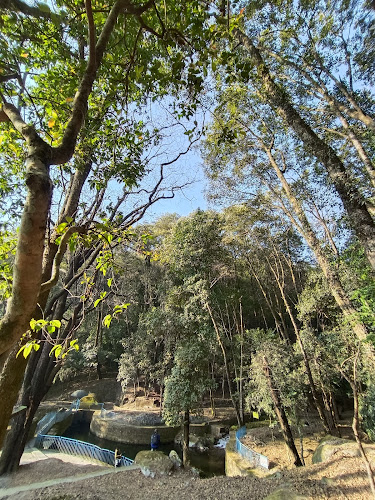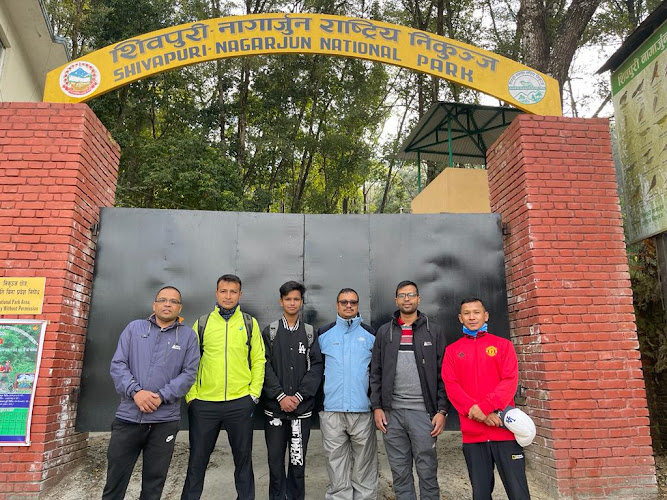



Shivapuri Nagarjun National PARK - Complete Visitor Guide
44600
Every morning, 30 million liters of water flow from Shivapuri Nagarjun National Park's springs and streams into Kathmandu Valley's taps, sustaining three million residents in a city that has outgrown every infrastructure plan ever conceived for it. This makes Shivapuri something exceedingly rare—a national park whose primary value isn't wildlife tourism or trekking revenues but the decidedly unglamorous work of watershed protection. Established in 2002 and covering 159 square kilometers across Kathmandu's northern rim, Shivapuri Peak at 2,732 meters anchors forests that function as Kathmandu's water tower, filtering monsoon rains through oak and rhododendron roots before releasing clean water from springs like Baghdwar, the sacred source of the Bagmati River that threads through Kathmandu's temples and cremation ghats.
The Bagmati's journey begins at Baghdwar spring inside the park, bubbling from bedrock at 2,600 meters elevation before tumbling downward through prayer-flag-draped forests. Hindu pilgrims climb to Baghdwar during festivals, particularly on Nepali New Year in mid-April when thousands arrive to bathe in water believed to wash away sins and renew spiritual merit. The spring feeds into a river system that has carried the ashes of countless cremations past Pashupatinath Temple, making it holy not through decree but through millennia of ritual use. Yet downstream pollution has transformed the sacred Bagmati into one of Asia's most contaminated rivers—which makes Shivapuri's role as protector of its headwaters all the more critical.
The park's 500-plus plant species create layered forest structure that maximizes water retention. Lower elevations support sal and chirpine transitioning to oak forests—multiple oak species with trunks wrapped in moss and branches hosting orchids and ferns that capture moisture from fog. Higher slopes favor rhododendrons, their twisted branches draped with lichen and their spring blooms painting hillsides crimson and pink. This vegetation slows rainfall, reduces erosion, and releases water gradually rather than in destructive flash floods, performing hydrological services worth millions of dollars annually though rarely accounted for in economic calculations.
Wildlife includes species that thrive near human populations while avoiding direct contact. Leopards patrol forest edges at night, occasionally snatching dogs from valley suburbs before vanishing back into protected terrain. Himalayan black bears forage for berries and raid cornfields in buffer zones, prompting electric fencing and compensation programs. Barking deer, wild boar, and rhesus monkeys populate forests while avoiding the hiking trails that crisscross the park. The 318 recorded bird species include Nepal's national bird, the iridescent Himalayan monal (danphe) with its metallic rainbow plumage, alongside kalij pheasants, magpies, laughing thrushes, barbets, and the endemic spiny babbler found only in Nepal's mid-hills.
Day hiking from Kathmandu transforms Shivapuri into the capital's favorite escape valve. The most popular route ascends from Budhanilkantha—beneath the massive reclining Vishnu statue—climbing through oak forest to Nagi Gompa, a Buddhist monastery perched at 2,330 meters where nuns maintain meditation practices and welcome visitors to a simple restaurant with valley views. From Nagi Gompa, trails continue to Shivapuri Peak's summit, a 6-7 hour round trip rewarded with Himalayan panoramas from Annapurna to Everest. Alternative routes start from Sundarijal, following the Bagmati River upstream past small waterfalls before climbing to Chisapani at 2,300 meters, a ridge-top village where lodges cater to Helambu trekkers and weekend hikers escaping Kathmandu's chaos.
The trail to Baghdwar attracts pilgrims year-round but especially during Janai Purnima when Brahmin Hindus replace their sacred threads in rituals requiring holy water. Stone steps climb through forest past chortens and prayer wheels reflecting the park's religious diversity—Hindu shrines coexist with Buddhist monasteries, the spiritual landscape as layered as the forest canopy. At Baghdwar, a small temple shelters the spring where water emerges cold and clear, pilgrims collecting bottles to carry home for blessings and ceremonies.
Entry points ring the park at Pani Muhan, Budhanilkantha, Tokha, Kakani, and Sundarijal, with entrance fees of 100 rupees for Nepalis and 1,000 rupees ($7.50) for foreigners—modest charges that fund ranger patrols and facility maintenance. Unlike remote parks requiring days of travel, Shivapuri sits 30 minutes from Thamel's tourist cafes, making it Nepal's most accessible national park for casual hikers and day-trippers. This proximity brings both benefits and challenges: easy access generates visitor income and builds public support for conservation, but it also increases pressures from illegal logging, poaching, and encroachment that plague protected areas near major cities.
Buffer zone communities numbering over 200,000 people depend on the park for fuelwood, fodder, and non-timber forest products, creating tensions between conservation mandates and subsistence needs. Community forestry programs provide legal access to resources while incentivizing protection, though enforcement remains challenging when economic pressures mount and monitoring proves difficult across rugged terrain. The park's 2002 establishment required relocating settlements and restricting traditional uses, decisions that sparked resentment still simmering two decades later in communities that question why they should sacrifice for environmental services benefiting wealthier urban residents downstream.
Yet Shivapuri succeeds precisely because its value extends beyond conservation ideals to tangible benefits. Kathmandu's water security depends on these forests remaining intact. The recreational opportunities support tourism businesses and provide mental health respite for valley residents trapped in pollution and congestion. The spiritual sites preserve religious traditions central to both Hindu and Buddhist communities. This multifunctionality—rare among Nepal's parks—creates constituencies supporting protection even as urbanization pressures intensify. In a country where protected areas often seem divorced from daily life, Shivapuri demonstrates conservation succeeding when people recognize that their own welfare depends directly on nature's health.
Park Features & Amenities
🛠️ Service options
- ✓ On-site services
♿ Accessibility
- ✓ Wheelchair-accessible entrance
🏃 Activities
- ✓ Hiking
🏗️ Amenities
- ✓ Public toilet
🎠 Children
- ✓ Good for kids
- ✓ Kid-friendly hikes
🐕 Pets
- ✓ Dogs allowed
Visitor Information
🕐 Best Times to Visit
Spring (Mar-May): Pleasant weather, blooming flowers
Autumn (Sep-Nov): Clear skies, comfortable temperatures
Early Morning: Best for wildlife viewing and photography
🗺️ Getting There
By Car: 44600
Public Transport: Local buses and taxis available
Walking: Check distance from city center
💡 Visitor Tips
• Bring water and sun protection
• Wear comfortable walking shoes
• Check weather conditions before visiting
• Bring camera for nature photography
Explore More in Nepal
Nearby Attractions
Popular Activities
Ready to Visit Shivapuri Nagarjun National PARK?
Plan your visit to this amazing destination with our comprehensive travel guide and insider tips.
Seasonal Travel Guide
Weather & Best Time
Autumn offers the best weather (15-25°C) with clear skies, excellent mountain views, and comfortable temperatures for all activities.
Best Activities:
- Mountain trekking
- Wildlife safaris
- Cultural tours
- Photography expeditions
- Adventure sports
Travel Tips
- Visit during September-November for optimal conditions
- Book early as autumn is the most popular season
- Plan for clear mountain views and excellent trekking
- Enjoy cultural festivals and celebrations
Packing Suggestions:
- Warm layers for cool evenings
- Sturdy hiking boots
- High-quality camera
- Sunglasses and sunscreen
- Comfortable daypack
Quick Facts
Best time: Autumn (Sep-Nov)
Duration: 1-3 days
Difficulty: Easy
Cost: Budget-friendly